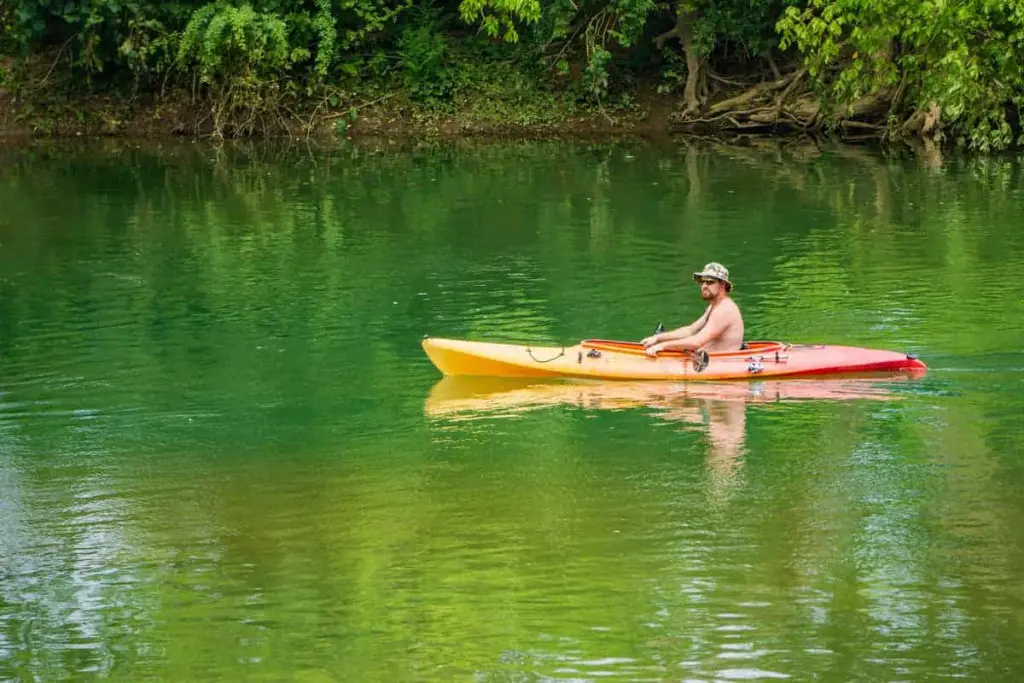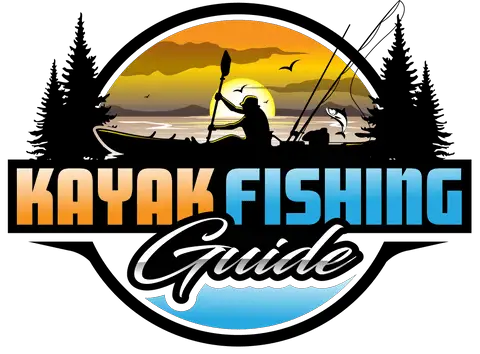
When you’re buying a fishing kayak, you shouldn’t go light on the research. Not only do you want to get the best value for your money, but you also want to ensure your boat is safe and reliable. These are the basics I went through in choosing my first kayak.
When choosing a fishing kayak, you should read up on the three main kayak types: sit-on-top, sit-inside, and inflatable. You should also consider the body of water you will be fishing in and the water temperature. Other key factors include the boat’s stability and the weight you will be hauling.
But that’s not all: you also want to take into account the kayak’s transportability, as well as whether it is a good fit for your body type. Finally, you should consider whether you will be fishing solo or in tandem.
Once I decided to buy a kayak, I thought it would be an easy purchase until I began looking in earnest! It was a bit overwhelming for me. So to learn more about the different kayak types and how they stack up against each other, keep reading.
Get to Know the Three Types of Kayaks
Sit-on-Top Kayaks
Sit-on-tops are the most popular and user-friendly kayaks. They provide you with plenty of storage space and room to move around. They are easy to get in and out of, which comes in handy if you need to get back on if you fall off. These boats are also more comfortable to stand on and give you a better view because you are positioned higher than in sit-in kayaks.
What’s more, sit-on-top kayaks are self-bailing, which means they have scupper holes on the bottom that allow water to drain. Scupper holes are an essential feature, as you are guaranteed to splash water on board while paddling. In addition to getting you wet, another downside to these boats is the fact that they are usually heavier than other similar-sized kayaks.
My current kayak is a Wilderness Systems ATAK 120 sit-on-top, and I’m pleased with it! My personal choice for a fishing kayak would be a sit-on-top, but any kayak you can get out on the water to start is a good one! Just be sure to have a Personal Floatation Device with you! Check my battle-tested Recommended Gear page for the PFD I wear!
Sit-Inside Kayaks
Sit-inside kayaks are your best option if you will be fishing in cold water, as they keep you dry while paddling. Some boats even come with a spray skirt that prevents water from entering the cockpit. They also tend to be faster than both inflatable and sit-on-top boats, making them an excellent choice for when you need to cover more considerable distances.
The main downside of sit-inside kayaks is that they may swamp if you flip them, as they do not have scupper holes for drainage. That makes a recovery a lot more challenging than with sit-on-top kayaks. Therefore, it’s generally a good idea to stay in sheltered or shallow water or closer to shore if you are a beginner. Sit-inside boats also have a more limited storage capacity than other kayak types.
Inflatable Kayaks
Inflatable kayaks are lightweight and very easy to transport and store when deflated. That makes them an excellent option for anyone who might be short on storage space, but you would have to invest in a good pump.
The main problem with inflatables is that they are not as stable as sit-on-top and sit-inside boats. That being said, it is possible to stand up in some of the higher-priced models. Inflatable kayaks also tend not to paddle as fast or as well as other kayak types. What’s more, you have to be careful where you launch and land, as sharper rocks and surfaces can damage or puncture the hull.
Paddle vs. Pedal Kayaks
All three kayak types now come in both paddle and pedal versions. While pedals leave your hands free for fishing, they make the boat heavier and less maneuverable. They can also make the kayak less effective in shallow waters. If you opt for a pedal version, make sure to keep a backup paddle onboard.
Consider the Body of Water You Will Be Fishing In
It is imperative that you get the right kayak for the body of water where you will be fishing.
For calm and sheltered waters such as small lakes and ponds, opt for a short sit-on-top kayak. You won’t be covering large distances, so your main concerns will be stability and comfort rather than speed.
The best option for rivers and streams is a shorter sit-inside kayak. It will keep you dry and is also easier to maneuver and turn in tight spaces.
For fishing in open waters such as large lakes or offshore, go for a long and narrow sit-on-top kayak. It will give you both speed and stability.
If you will be fishing in the ocean, you need to be wary of currents, tides, waves, and winds. Your best bet in this scenario is a kayak with a rudder system, as these are easier to navigate in challenging conditions.
Consider the Water Temperature
If you are going to be fishing in cooler water, you might want to consider a sit-inside kayak. It will prevent cold water from entering the cockpit and will keep you warm. This is particularly important if the weather is going to be on the colder side, too.
Take Into Account the Boat’s Stability
If you are a beginner kayaker and want to avoid falling over into the water, you should invest in a boat that is as stable as possible. Stability is also crucial when fishing in open and unpredictable waters.
For maximum stability, opt for a sit-on-top kayak. In terms of the shape of the boat, avoid V-shaped ones as they tend to tip easily. Instead, choose a tunnel- or flat-bottom-shaped hull, especially if you plan on standing up while fishing.
As far as the width and length are concerned, the broader and shorter the boat, the more stable it will be. However, bear in mind that broader boats are sluggish and may not be a good option if you are looking to reach higher speeds or cover more ground.
Consider the Weight You Will Be Hauling
The next thing to take into account is the weight you expect to be hauling. Factors to consider include:
- Your own weight
- The weight of the fishing gear and any other equipment you will be carrying
- The estimated weight of the fish you expect to catch
Make sure these figures are compatible with the boat’s weight capacity.
Need more information on kayaks for heavier loads? Check out my article Kayak Weight Limits Explained for Larger Anglers !
Consider the Kayak’s Transportability
Sit-on-top and sit-inside kayaks are generally heavier than inflatable ones. In addition, the more features and accessories a boat has, the heavier it is. Therefore, make sure your vehicle will be able to transport the kayak safely.
Factor in Your Body Type
Some people need more legroom and extra space than others. Before committing to a purchase, try a few different kayak types and models. Sit inside and ensure that you reach the pedals easily and can paddle without any constriction. Then, sit back and check that the seat is comfortable on your back and that your bottom is high enough so as not to get wet if any water splashes on board.
Consider if You Will Be Fishing Solo or in a Pair
If you won’t be fishing alone, consider getting a tandem kayak. However, bear in mind that these can be more difficult to maneuver.
Conclusion
Kayak fishing can be incredibly rewarding, but to guarantee your safety, it is essential that you do it right and invest in a high-quality boat.
Here are some key factors to consider when choosing a fishing kayak:
- The kayak type
- What bodies of water you will be fishing in
- The water temperature
- How stable the boat is
- The kayak’s weight capacity
- Its transportability
- Your body type
- Whether you will be fishing alone
Other articles you’ll want to check out!
- How to Outfit a Kayak for Fishing: The Ultimate Guide
- Can You Fish in an Inflatable Kayak? Tips & Advice!
- Kayak Color: Does It Matter When Fishing?
- Can You Fish From a Regular Kayak?
Thanks for dropping by and stay safe!
